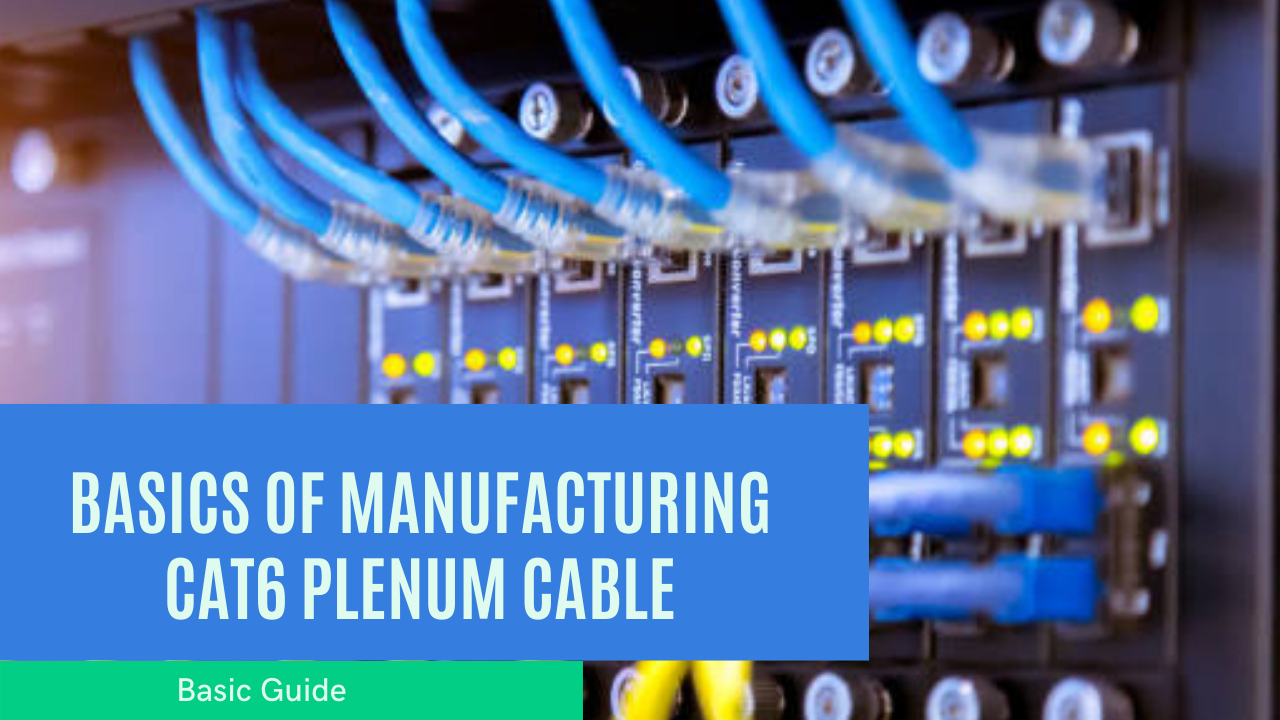The Basics of Manufacturing Cat6 Plenum Cable
Knowing what goes into creating Cat6 Plenum Cable will undoubtedly aid you in comprehending the high-quality performance that results. With the rapid advancement of technology, the demand for high-quality ethernet cables has risen dramatically. The Cat6 Plenum 1000ft Cable manufacturing sector, fortunately, has kept up with the times.
So, let’s delve a little deeper into the details to see what goes into the production of Bulk Cat6 Plenum Cable and how it influences its performance.
Primary Conductor Design
The Cat6 Plenum Cable’s primary conductor is made up of 22AWG to 24AWG bare copper conductors. An insulating layer surrounds these solid copper conductors. Every section of these bare copper conductors should be thoroughly managed to assure top-notch mechanical and electrical performance.
The smoothness and contour of the conductor’s surface, the profile of the solid copper conductor, and, last but not least, the concentricity of the conductor within the plastic insulating material are all important components.
Attenuation, return loss, and impedance is all intimately related to the primary conductor structure.
Various measures are used to reduce the possibility of signal loss, including increasing the diameter of solid copper conductors, fewer pair twists per inch, and proper annealing of the conductors. The eccentricity of the solid copper conductors within the extruded insulation has an impact on return loss performance as well.
Drawing Process of Cat6 Plenum Cable
The tandem insulating extrusion method starts with a bigger gage solid copper cable (typically 12AWG or 13AWG) being drawn through several sets of diamond dies to a final size of solid copper wire ranging from 22AWG to 24AWG.
The wire is dragged through each die by a pulley or one draw block. The line speed of draw blocks increases significantly when the gauge is decreased and copper is pulled. Extreme heat is emitted by machines during the drawing process, and the equipment is constantly lubricated and cooled to ensure minimal slippage, long die life, and a flat surface of solid copper conductor.
Conductors are subject to cracking and brittleness as a result of the drawing process. In a controlled nitrogen environment, annealing equipment raises the temperature of bare copper to 450°F. This is done in order to produce the desired elongation qualities by adjusting the metal softness. The signal transmission rates are improved by annealing.
The flame ratings are used to select the insulation material used in the annealing process (CMP for plenum cables). The performance of category transmission is also taken into consideration.
Applying insulation
Through the use of an extruder head, colorized tiny thermoplastic pellets are homogenized, compressed, and melted. Insulation is placed on warmed solid copper Cat6 Plenum 1000ft conductors during this process.
The physical qualities of the insulation material, such as elongation and tensile strength, are preserved during the preheating phase before the extrusion process. The insulation material adheres well to the solid copper conductor during the preheating step.
Twisted-pair design
Throughout the Bulk Cat6 Plenum Cable production process, careful attention is paid to preserving the proper lay and uniform tension of the twisted pair. Slow process rates and advanced twining equipment are required to make high-quality Bulk Cat6 Plenum cable.
The equal strain should be provided to each solid copper conductor by twining equipment to ensure a balanced pair geometry. Bow spindles are used to pass copper wires. Each conductor goes through deviation pulleys as it travels, with each pulley causing one twist in each pair. This approach has been demonstrated to improve twist lay accuracy as well as manufacturing throughput.
Jacketing and Packaging of Cat6 Plenum Cable
The primary goal of cable jackets is to protect the completed product from interference with the pair geometry. The jacket compound’s flame performance is influenced by the compound it is made of. LSPVC compounds are employed to give a high-level performance in plenum spaces of buildings like we’re talking about Cat6 Plenum Bare Copper Cable.
When it comes to packing, the options are mainly restricted to reel-less boxes or wooden reels. There is, however, a third option, which involves placing the reel into a spindle and a holder.
Conclusion
Cat6 Plenum 1000ft has become essential for data transmission and telecommunications in modern structures because of its simplicity of design, durable performance, and convenience of use. The production of these cables, on the other hand, is only one part of the performance; the other is the thorough and flawless installation. When properly fitted, you receive the finest performance and value for your money.
When purchasing Cat6 plenum cable, always go for pure copper cables that come with all of the necessary certifications. Plenum cables are still an important part of networking.
Our Cat6 Pure Copper Plenum cable is one of our best-selling goods at New York Cables, with thousands of positive ratings accessible on TrustPilot, our own website, and Google’s review area.






